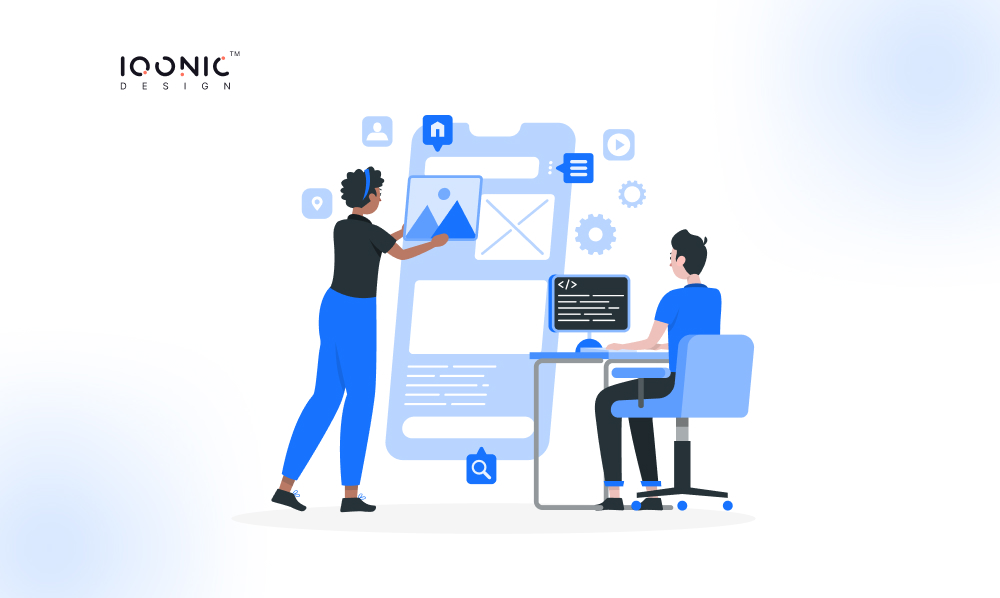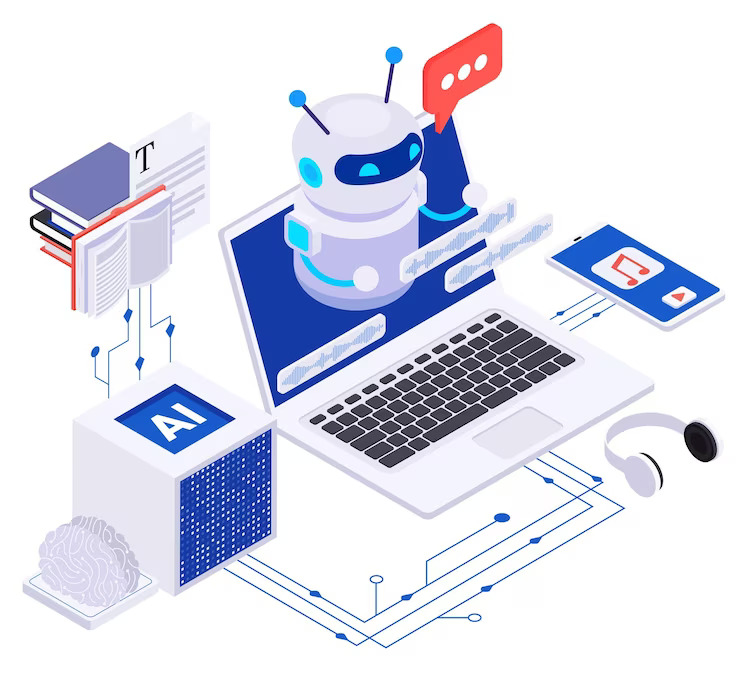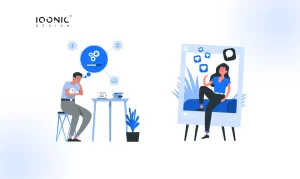
Top 7 Software Development Trends to Watch in 2024 and Beyond
In the dynamic realm of technology, staying abreast of software development trends is crucial for professionals and enthusiasts alike. The rapid pace of technological advancements demands continuous learning to navigate the ever-evolving landscape effectively. This blog aims to simplify the complex world of software development trends, offering a concise guide to the top 7 trends in 2024.
Developers, businesses, and tech enthusiasts can benefit immensely from understanding the latest innovations in today’s fast-paced environment. Whether you’re a seasoned developer or just stepping into the tech scene, keeping a finger on the pulse of software development trends ensures you stay relevant and equipped for the challenges and opportunities.
Now, let’s delve into the heart of the matter – the top 7 software development trends shaping the industry in 2024 and beyond.
1. Artificial Intelligence (AI) in Software Development

Artificial Intelligence (AI) is pivotal in revolutionizing software development processes. Its impact spans from requirement analysis and planning to deployment, addressing the evolving needs of modern users. In software development, AI acts as a catalyst for innovation, introducing efficiencies and possibilities that were previously unimaginable.
The Role of AI in Software Development
AI is more than a simple instrument; it stands as a force driving transformation. It simplifies complex tasks, enhances decision-making, and automates repetitive processes, allowing developers to focus on creative aspects. AI applications in software development are diverse, ranging from natural language processing for understanding user inputs to machine learning algorithms that improve system performance over time.
Applications and Advancements
AI applications in software development are extensive. They include optimizing code, automating testing procedures, and predicting potential issues before they arise.
Advancements in AI have led to smarter algorithms, enabling software to learn from experience, adapt to new inputs, and even self-train, enhancing overall system efficiency.
Emerging AI Technologies
The landscape of AI is continuously evolving. Emerging technologies include advanced natural language processing, computer vision, and reinforcement learning. These innovations are shaping the future of software development, making systems more intelligent, adaptable, and user-friendly.
In conclusion, AI’s role in software development goes beyond automation; it empowers developers to create innovative solutions, streamline processes, and meet the ever-growing demands of the digital era.
2. Full-Stack Development Simplified
Full-stack development is the art of building a web application’s visible part (front end) and behind-the-scenes workings (back end). Imagine it as a jack-of-all-trades in the software world, handling everything from user interfaces to server databases.
Defining Full-Stack Development
In simpler terms, a Full-Stack Developer knows their way around the entire web development process. They are adept at working with the parts users see and the complex logic that makes it all function seamlessly.
Significance and Evolution
Full-stack development is crucial because it allows developers to understand the entire application, fostering efficient collaboration and problem-solving. As technologies advance, the landscape of Full-Stack Development evolves. To build comprehensive websites, developers must be familiar with various frameworks and programming languages.
Impact on Software Development
The impact of Full-Stack Development on software creation is profound. It enables developers to create end-to-end solutions, reducing the need for multiple specialists. This efficiency speeds up development and ensures a more cohesive and integrated final product.
3. The Power of Python in Software Development
Python, a programming language known for its simplicity and readability, has become immensely popular for its versatility. Widely used in various domains, Python is a favorite among developers thanks to its user-friendly syntax.
Popularity and Versatility
Python’s popularity stems from its ease of use and adaptability. It excels in web development and is supported by robust frameworks like Django and Flask. Its versatility extends beyond web development, making it a top choice for data science, machine learning, and artificial intelligence.
Role in Software Development Trends
Python plays a pivotal role in shaping current software development trends. Its simplicity accelerates development cycles, contributing to the agile nature of modern software practices. Python’s readability fosters collaborative coding, facilitating teamwork in large-scale projects.
Python-Related Advancements
Recent advancements in Python programming have propelled it even further. The language’s versatility and power enable organizations to stay competitive in the evolving digital landscape. Python’s influence extends to reshaping the programming landscape, emphasizing its role as a driving force in the future of software development.
4. The Impact of Cloud Computing on Modern Software Development
Cloud computing has revolutionized modern software development, playing a crucial role in its evolution. Its significance lies in transforming traditional practices, offering scalability, flexibility, and cost-efficiency.
Role in Modern Software Development
Cloud computing serves as the backbone for cutting-edge software development trends. It enables companies to reduce costs, store and process vast amounts of data, and enhance collaboration among development teams. The cloud’s on-demand resources empower developers to focus on innovation rather than managing infrastructure.
Trends and Innovations in Cloud Technology
Recent trends in cloud technology include advancements in serverless computing, containerization with technologies like Kubernetes, and the widespread adoption of microservices architecture. These innovations enhance agility, simplify deployment processes, and facilitate the development of scalable and resilient applications.
Impact on Software Architecture
Cloud computing profoundly impacts software architecture, ushering in a shift towards decentralized and scalable systems. The ability to dynamically allocate resources and utilize services like serverless computing has redefined traditional architectural patterns, making them more adaptable to the demands of modern applications.

The advent of 5G technology has ushered in a new era of software development, revolutionizing how we interact with mobile applications. The influence of 5G networks is profound, bringing about significant enhancements in speed, connectivity, and user experience.
Influence on Software Development
5G enables faster data transfer rates, reducing latency and allowing developers to create more responsive and immersive applications. This evolution in connectivity opens up new possibilities for software development across various domains.
New Possibilities in App Development
With 5G, app developers can leverage enhanced capabilities such as augmented reality (AR), virtual reality (VR), and high-definition video streaming. These advancements contribute to creating richer and more dynamic mobile app experiences, shaping the future of app development.
Industries Benefiting from 5G Technology
Several industries stand to benefit from the capabilities of 5G technology. Telecommunications, healthcare, manufacturing, and entertainment are among the sectors witnessing transformative changes. The increased speed and reliability of 5G networks facilitate innovations like remote surgery, smart factories, and high-quality streaming services.
6. No-Code/Low-Code Development
No-code/low-code development is a game-changer in the software development landscape, making app creation accessible to non-developers. This approach simplifies the development process by minimizing the need for manual coding utilizing visual interfaces and pre-built components.
Accelerating the Software Development Process
The impact of no-code/low-code is evident in its ability to accelerate software development. By reducing dependency on traditional coding methods, development cycles are shortened, allowing for quicker deployment of applications. This democratization of development empowers teams to bring ideas to life swiftly.
Platforms and Tools
Numerous platforms support no-code/low-code development, such as Bubble, OutSystems, and Appgyver. These tools offer drag-and-drop functionality and pre-built elements, enabling users with diverse skill sets to seamlessly contribute to the development process.
7. Quantum Computing
Quantum computing is a burgeoning trend poised to revolutionize software development. Unlike classical computers, which use bits, quantum computers leverage qubits, allowing for exponential data processing.
Significance and Impact
The significance of quantum computing lies in its ability to handle complex calculations at unprecedented speeds. This technology holds immense potential for cryptography, optimization problems, and simulating quantum phenomena. In software development, it promises to expedite algorithmic efficiency, enabling the resolution of intricate problems in record time.
Potential Impact on Software Development
Quantum computing’s impact on software development extends to machine learning and data analysis fields. Its prowess in handling vast datasets and intricate algorithms could lead to breakthroughs in artificial intelligence and optimization processes. Developers may harness its power as quantum computing matures to create more robust and efficient applications.
Conclusion
In conclusion, the dynamic landscape of software development is shaped by ever-evolving trends. From cloud-native applications to artificial intelligence and blockchain, staying informed is crucial. Adapting to client needs and embracing innovation are key challenges. To drive success, developers must explore and implement these trends.
Doing so enhances user experiences, fosters customer satisfaction, and propels their projects to new heights. As technology advances, continuous learning and integration of emerging trends will keep developers at the forefront of this rapidly changing industry.






